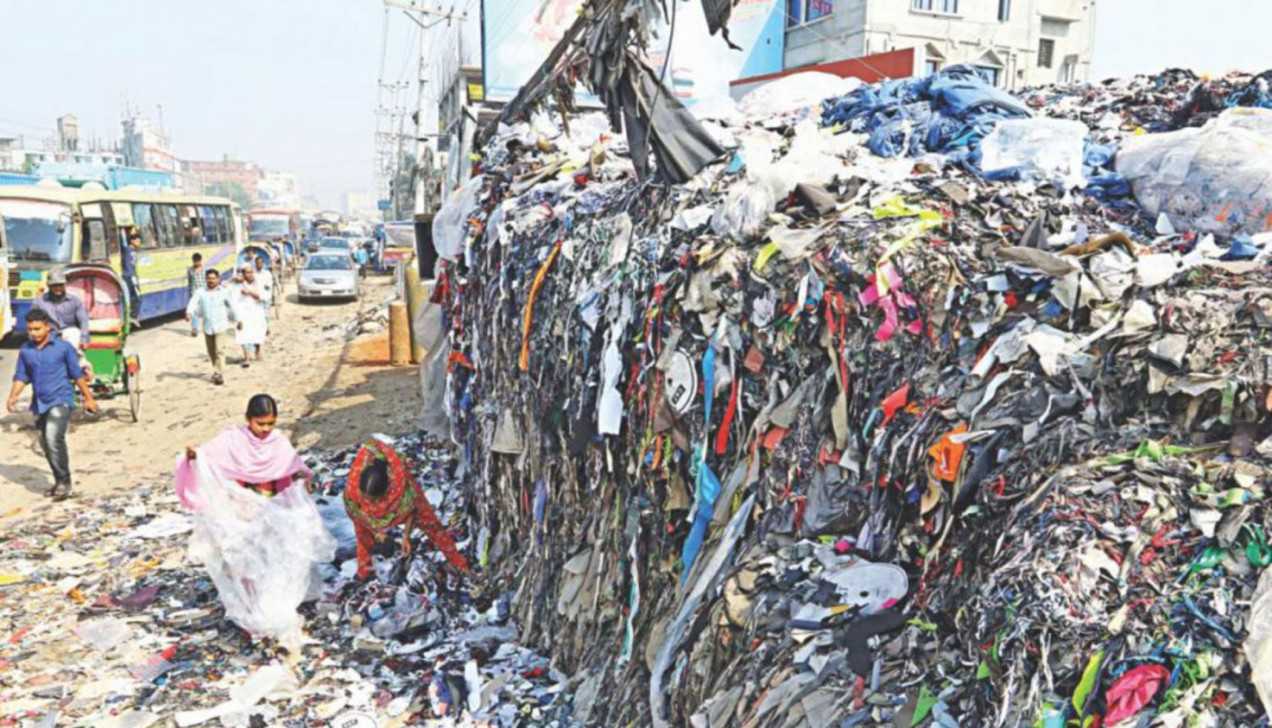Circular economy is here now to stay, so embrace it!

Image: Collected
In the past 12 months, we have seen overwhelming commitments created by the global apparel industry towards circular economy and making fashion circular. We all know that people cannot continue along today's "make-consume-dispose" business design and circularity seems to offer us a means out of that. There has been a significant growth in the amount of initiatives in this area and, in this space more than any other, investment is apparently flowing.
The discussion around recycling has not really involved Bangladesh very much-until now. That changed recently with the launch of a fresh partnership by Global Fashion Agenda with the BGMEA and funded by P4G Partnerships. That is a collaboration project and proactive approach to initiate and scale up the recycling of textile waste in Bangladesh. The first signatories of the new initiative include Bestseller and OVS. In every, the partnership aims to invite 10 brands in the programme who all, as one of their first commitments, introduce three first suppliers in Bangladesh to begin segregation of waste at source and tracing it to recycling.
I will not go in to the more specifics of this programme, other than to say it looks very promising. Instead, here is what I believe Bangladesh needs to do as a garment sourcing hub to lead the world in the textile recycling revolution.
One: Education. If you want to shift the linear economy to the circular, we have to start from the beginning-and that means sensitise and educate our youngsters about these issues. The basics of recycling-the recycling hierarchy for instance-should be drilled in to the minds of young persons from a young age. As children get older, you will want to teach them more about circularity, about how precisely new processes are being developed to recycle old fibres into new ones. Perhaps this may even be introduced into the science syllabus-in chemistry and physics. Further, it really is time our universities and colleges embraced recycling issues regarding their learning and training. We have to aim to be leading the world in research textile separation techniques. And, of course, links ought to be built between recycling learning in universities and industry.
Two: Collecting waste. If we wish our industry to go circular, we must get the logistics right. What's the current state of our textile and clothing collection services and how can it be improved? Do we realize and understand the difference between different grades of fibre? A great many other countries are lightyears before us upon this, and that's obviously a problem. But why not bring in some outside consultants to check out what we are doing wrong in this area and where we are able to improve? This includes textile waste from the general public but also textile waste from our RMG industry, huge levels of which is discarded each year-what is happening to this? We are in need of far more traceability upon this issue.
Three: Waste sorting. This is a challenging area which goes submit hand-or works alongside-textile waste collection services. Sorting textiles into different waste streams has traditionally been done yourself, although new, infra-red sorting technologies are being introduced in this area. My guess is that the price of such technologies will be prohibitive and that, given Bangladesh's low wage rates, manual sorting is definitely the best bet for now. Again, we may have to consider outside expertise to aid us here.
Four: Getting owner buy-in. At the moment, I would say there is a insufficient understanding about circularity and recycling issues among the RMG sector in Bangladesh-and that must change. This space has moved on at an enormous pace during the past 18 months. Every time I travel or play a Zoom call, circularity is one of the issues being discussed. If Bangladesh will be at the head of the queue on these issues, our industry leaders need to be embracing it now. They have to be getting a knowledge of the technologies involved, exploring ways that they could partner with a number of the leading technology providers in this industry, and seeing if there are opportunities to put out one-off pilot lines to check the waters in this area. In addition they need to know how the technology works. There has already been talk of recycling technologies being certified to fabric makers-but how would that work and what are the economics of it? My message to my fellow factory owners is that circularity is here to stay-embrace it, for if you do not, others will.
Five: Marketing and promotion. That is arguably the most crucial area of all. I shop around at our competitors when it comes to apparel production-Vietnam, China, India and so on-and I really do not see them as having made quite definitely progress regarding recycling. Let us be realistic-so far, this has been a discussion which includes mainly taken place among brands and their technology partners. It's high time for manufacturers to seriously board and the ability will there be for Bangladesh's RMG manufacturers to lead the way. But to do that, we are looking for coordination and teamwork. We must get the message out in your industry that circularity, in all probability, is here to remain. That's where the investment is occurring, this is where the amount of money is flowing, which is where in fact the opportunities lie.
Source: https://www.thedailystar.net
Tags :
Previous Story
- Economic threats in the time of corona
- DHL Bangladesh holds career counseling for TFB fellows
- Embracing free market principles driving force behind economic...
- Global Bangladesh Market Size 2019 by Channels, Downstream...
- Geo Chem: A Global Testing and Inspection Giant...
- Facebook Still Isn't Giving Up on the Smart...
- Investment Industry
- Global Bangladesh Market 2019 Share, Growth, Key Manufacturers...